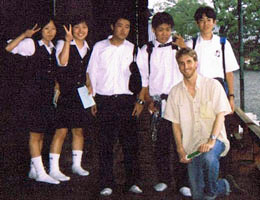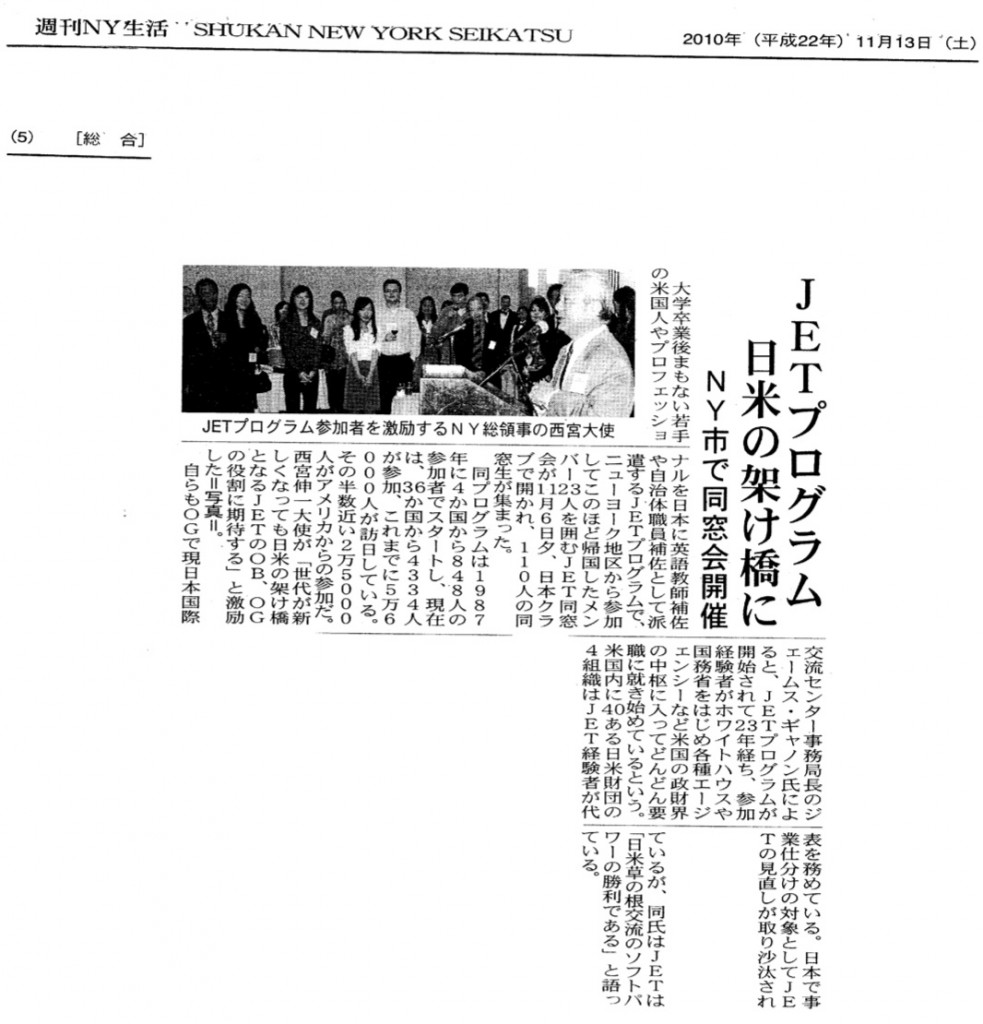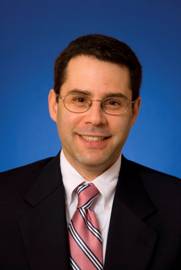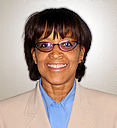JET Alum LinkedIn Groups: Shimane-ken demonstrates its superiority
Regarding the JET alum prefectural groups recently set up on LinkedIn, just a quick note to let everyone know that Shimane-ken is kicking major oshiri and is already up to 23 members. Well ahead of any of the other groups.
If you’re ok with this, you shouldn’t be. Now is the time to reach out to people in your prefecture and get them to sign up for the respective LinkedIn Group. The leading group by next week will receive significant accolades on JetWit. (That’s all I can really offer right now. JetWit t-shirts for everyone would be too expensive for me.)
Here’s the link again to all of the prefectural LinkedIn groups along with some explanation about why this is important to the future of JET and JETAA:
http://jetwit.com/wordpress/2011/01/21/saving-jet-jet-alumni-groups-by-prefecture/
*******
p.s. Also a reminder that there are also JET alum Linkedin groups for Translators, Lawyers, Education Professionals, China Connection, Restructuring Professionals and more. Here’s a partial list: http://jetwit.com/wordpress/jet-alum-groups/ (You can also just search on LinkedIn.)
And if you can’t find what you’re looking for, start your own group! Just e-mail the link to jetwit [at] jetwit.com and I’ll post about it on JetWit to encourage more people to join.
 What does “Saving JET” have to do with joining your JET prefecture’s LinkedIn group?
What does “Saving JET” have to do with joining your JET prefecture’s LinkedIn group?
- The biggest threat to JET (and JETAA) now is attrition at the local government level as prefectural governments increasingly choose to reduce costs by getting ALTs from dispatch companies rather than hiring JETs.
- The most effective way to counter this trend is to demonstrate a positive ROJ (“Return on JET-vestment”) at the local government level.
- Local governments have expressed a strong interest in being able to connect and communicate with JET alumni who worked in their prefectures.
- JET Alumni have never been organized by prefecture….
……until now. So please do your part and sign up for your respective JET Alumni LinkedIn Group below. It’s one small act of giving back to your prefecture that can make a big difference over time.
Yoroshiku onegaishimasu.
–Steven Horowitz (Aichi-ken, Kariya-shi, 1992-94)
jetwit [at] jetwit.com
Prefectural JET Alumni LinkedIn Groups
- FYI: All groups below were created in connection with JetWit and not by the prefectural governments. They’re just intended to help facilitate future communications.
- Current JETs and Monbusho English Fellows (MEFs) welcome too, as always. Additionally, prefectural and other government employees as well as residents of each prefecture are welcome to join the groups.
- If anyone would like to be a “Manager” for their respective LinkedIn group, that would be very helpful. Just get in touch. Primary role will be approving requests to join the group.
- You may of course join other groups in addition to your own prefecture’s group if it’s helpful to you.
-
Aichi JET Alumni
-
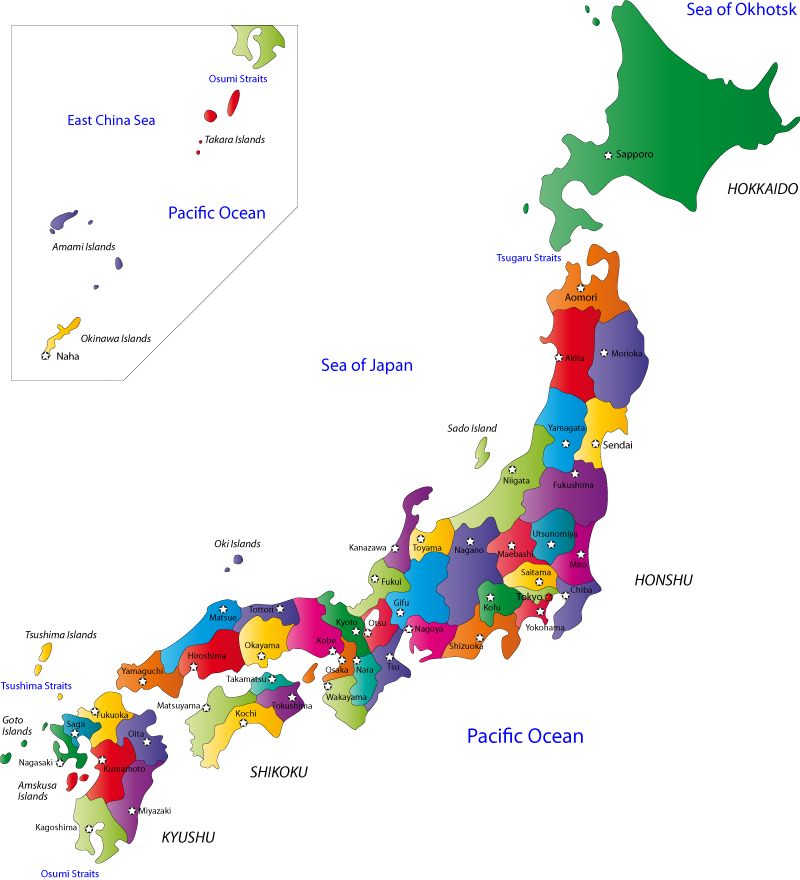 Akita JET Alumni
Akita JET Alumni -
Aomori JET Alumni
-
Chiba JET Alumni
-
Ehime JET Alumni
-
Fukui JET Alumni
-
Fukuoka JET Alumni
-
Fukushima JET Alumni
-
Gifu JET Alumni
-
Gunma JET Alumni
-
Hiroshima JET Alumni
-
Hokkaido JET Alumni
-
Hyogo JET Alumni
-
Ibaraki JET Alumni
-
Ishikawa JET Alumni
-
Iwate JET Alumni
-
Kagawa JET Alumni
-
Kagoshima JET Alumni
-
Kanagawa JET Alumni
- Kobe JET Alumni
-
Kochi JET Alumni
-
Kumamoto JET Alumni
-
Kyoto JET Alumni
-
Mie JET Alumni
-
Miyagi JET Alumni
-
Miyazaki JET Alumni
-
Nagano JET Alumni
-
Nagasaki JET Alumni
-
Nara JET Program Alumni (set up by Savannah Maynard)
-
Niigata JET Alumni
-
Oita JET Alumni
-
Okayama JET Alumni
-
Okinawa JET Alumni
-
Osaka JET Alumni
-
Saga JET Alumni
-
Saitama JET Alumni
-
Shiga JET Alumni
-
Shimane JET Alumni
-
Shizuoka JET Alumni
-
Tochigi JET Alumni
-
Tokushima JET Alumni
-
Tokyo JET Alumni
-
Tottori JET Alumni
-
Toyama JET Alumni
-
Wakayama JET Alumni
-
Yamagata JET Alumni
-
Yamaguchi JET Alumni
-
Yamanashi JET Alumni
Note on Methodology: I took a relatively awkward approach to setting this all up. I created subgroups via my LinkedIn account. However, LinkedIn only lets a user create up to 10 groups and up to 20 subgroups, so I had to create a new LinkedIn account (“Jet Wit”) and use that account to set up the rest of the prefectural alumni groups. Not ideal, but it seemed to be the best solution under the circumstances and given limited resources. It’s always better to have something than nothing. I’m very open to any ideas and suggestions on better ways to set this up.
Update: JET-Tourist Tally Project
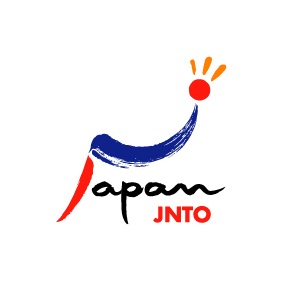 Check out the latest numbers for the JET-Tourist Tally Project (i.e., how much tourism revenue alone does JET generate directly for the Japanese economy?)
Check out the latest numbers for the JET-Tourist Tally Project (i.e., how much tourism revenue alone does JET generate directly for the Japanese economy?)
http://jetwit.com/wordpress/2010/12/08/project-how-much-tourism-revenue-has-jet-generated-for-japan/
Tentative conclusion thus far?
With over 250 respondents to date, it looks like it’s fair to say that the average JET generates tourism revenue for Japan in an amount equivalent to about 1/5 to 1/6 of their salary. In other words, you could argue that 1/5 to 1/6 of the budget for JET salaries should be subtracted right off the bat for discussion purposes. This is in addition to other return on investment from JET (e.g., financial, diplomatic, cultural).
JET Alum Anthony Bianchi to run for Lower House seat in upcoming Japan elections
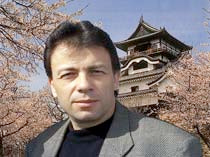 Here’s the link to the article (which is in Japanese): http://www.asahi.com/politics/update/0111/NGY201101110010.html
Here’s the link to the article (which is in Japanese): http://www.asahi.com/politics/update/0111/NGY201101110010.html
Below is text from the article:
衆院愛知6区補選 民主、犬山市議のアンソニー氏擁立へ
民主党の石田芳弘衆院議員(65)の名古屋市長選立候補に伴い、4月に予定される衆院愛知6区補選に、同党が愛知県犬山市議のビアンキ・アンソニー 氏(52)を擁立する方向となった。同党愛知6区総支部が11日午前に開いた選挙対策会議で、候補として県連に提案することを決めた。
ビアンキ氏は米国ニューヨーク市出身。1989年に愛知県教育委員会の英語指導助手として来日。2002年に日本国籍を取得して03年に犬山市議選に立候補、最多得票で初当選した。06年には同市長選に立候補したが、8候補中3位で落選。07年に市議に再選された。
総支部の意向を踏まえ、県連が最終調整を進める。衆院補選への立候補について、ビアンキ氏は朝日新聞の取材に「名誉なこと。まだいろいろなステップがあるが、頑張っていきたい」と述べた。
6区補選では、09年衆院選で落選した自民党元職の丹羽秀樹氏(38)が立候補を準備。みんなの党も独自候補を擁立する方針だ。
Blog post about JET Programme on U.S. Embassy website
The following link comes via JET alum Aurelien Hancou (Okayama-ken 2003-06), now a Senior Programme Coordinator at CLAIR. Hancou writes to share a guest blog post by Mr. Mark S. Dieker, Consul for Political and Economic Affairs at the U.S. Consulate in Fukuoka:
http://zblog.japan.usembassy.gov/e/zblog-e20101221a.html
The post is a great testimony of the value and benefit of the JET Programme. Check it out!
Report: “Reinvigorating US-Japan Policy Dialogue and Study” and implications for JET
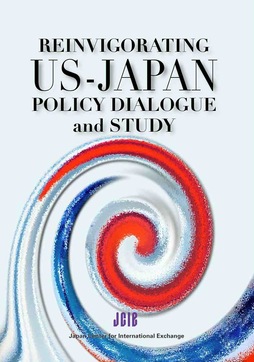 There’s a very JET-relevant report just published by the Japan Center for International Exchange titled “Reinvigorating US-Japan Dialogue and Study.” (Notably, JET alum Jim Gannon (Ehime-ken, 1992-94), Executive Director for the US office of JCIE, was involved in the drafting of the report.)
There’s a very JET-relevant report just published by the Japan Center for International Exchange titled “Reinvigorating US-Japan Dialogue and Study.” (Notably, JET alum Jim Gannon (Ehime-ken, 1992-94), Executive Director for the US office of JCIE, was involved in the drafting of the report.)
Though the report only mentions the JET Program once (on page 33 of the report), it’s clear that the still largely untapped resource that is the JET alumni community of over 50,000 worldwide (25,000+ in the US) has the potential and the ability to play a significant role in US-Japan relations going forward given the decline in energy and resources devoted to US-Japan policy dialogue and study cited in the report.
The gist of the report is that “the institutional base of US-Japan policy dialogue and study has started to erode in recent years.” However, the report also “finds fertile ground to deepen bilateral dialogue and better leverage the extensive human networks that have developed between the two societies.”
The main obstacles to reversing this trend appear to be:
- a shrinking institutional base for US-Japan relations and failure to fully take advantage of available resources (e.g., the JET alum community);
- reduced funds available in Japan to support these activities (due in a large part to a down economy); and
- to some extent, increased interest in and focus on China
As JET alums, the above trends may be beyond our control. But we are a big part of that extensive human network that needs to be leveraged. And regardless of the obstacles, the ball is in our court to be part of the solution. Tough times call for innovative solutions.
Gambarimashou.
Update 5/9/11: CLICK HERE to read “Stories from the JET-Tourist Tally Project“
Update: We’ve set up a Google Form to collect responses as an alternative to doing this via e-mail.
*******
Thanks to the Japan National Tourism Organization for its help in spreading the word about this project.
The “JET-Tourists Tally Project“
Last updated: 05/09/2011 (Thanks to JETAA UK and JETAA DC for letting its members know about the survey!)
- Tourists brought to Japan by JETs: 2,009
- Visitor Days: 22,574
- Respondents: 347
- Estimated tourism revenue (¥10,000/day): ¥225,740,000 (about $2,687,381 @ US$1=84yen)
- Estimated tourism revenue per JET respondent: ¥650,548 (about $7,745 @ US$1=84yen)
- Conclusion? At a minimum, JETs generate the equivalent of 1/5 to 1/6 of their salary for the Japanese economy. This is in addition to other returns on investment (e.g., diplomatic, financial and cultural) provided to Japan by participants in the JET Program.
(See further below for breakdown by prefecture.)
Here’s a simple way for every JET and JET alum to do their part to support the JET Programme and the JET Alumni Association.
- Just fill out this simple Google Form that we set up: https://spreadsheets.google.com/viewform?formkey=dFFPeW5zdUZjQ3RZbEJJQ2IzNHJCZHc6MQ&ifq
or, if you prefer….
- E-mail visitors [at] jetwit.com and
- Tell us how many people you are personally responsible for causing to visit Japan (both during and since JET).
Please make sure to include:
- Number of tourists (e.g., Mom + Dad + two brothers = 4 people)
- Total number of days they stayed in Japan (e.g., If Mom & Dad + two brothers each stayed for 10 days, that’s 40 total days of tourist travel)
- Your name + position on JET (ALT/CIR/SEA)
- Your Prefecture + city/town and years on JET (e.g., 2006-10) (this is vital info!)
- Any comments, stories or additional info you want to share
Nearly all of us had relatives and friends come and visit us in Japan. Some of us have brought student groups and organized other exchanges. All of this has provided tourism revenue for the Japanese economy. The goal of this project is to determine, at a minimum, the amount of tourism revenue for which JET is directly responsible.
This information is particularly important amidst ongoing discussions of costs associated with the JET Programme and the JET Alumni Association. Many of the short and long term benefits have simply not been factored in. So email visitors@jetwit.com with your responses and let’s make sure this info does get factored in to future discussions.
We will continue to update the numbers in this post. Please check back periodically for updates.
Note: We are assuming a rather conservative estimate of Y10,000 per day (approximately $100) for all tourism expenditures combined (e.g., lodging, travel, food, entertainment and other tourist expenditures). Some people flew Japanese airlines, others did not. Some stayed in hotels, others stayed for free on the couch. All in all, 10,000 yen/day is a very low-end estimate.
Special domo arigatou for their ongoing help with this project to Joe Silvagni (Nagasaki-ken, 2008-10), Mike Shu (Hyogo-ken, 2005-08) and Sam Lederer (Shizuoka-ken, 2005-07).
*******************
JetWit Diary 12.03.10
JetWit Diary is a new feature by Steven Horowitz (Aichi-ken, 1992-94), founder and publisher of JetWit. Steven is available on a consulting basis to assist organizations with any membership building, social media consulting, creative communications and writing needs.
JET and the Local Government Challenge
In light of recent information about Aichi’s decision to forgo prefectural JETs and awareness that, in contrast, Hyogo and Kobe seem to be very supportive of JET, and after a suggestion by JETAANY President-to-be Monica Yuki that perhaps it would make sense to focus our energies on the the prefectures that are the most JET-friendly, I thought it would be a good idea to figure out statistically which prefectures or contracting organizations are making the most use of JETs.
To that end, further below (after the “Read More” break) is a list of the contracting organizations with the most JET ALTs. (FYI, a “contracting organization” is a prefecture, city, board of education, etc. that allocates budget towards hiring JETs.)
In the meantime, I think it would also be very helpful to get a sense of why some contracting organizations continue to support and hire JETs while others do not. So I’d like to request that any JETs and JET alums out there (especially CIRs) get in touch if you have any perspectives based on conversations or other interactions.
- Email responses to: jetwit [at] jetwit.com
Generally speaking, of course, I’m well aware that tight budgets have a lot to do with the attrition. But it might be helpful to dig a little deeper and know why JET is prioritized above or below other budget items. Also, what factors might cause a contracting organization to change the way it views or prioritizes JET? And perhaps any ways that some prefectures may have found to extract more value (short and long term) from having JETs that helps justify the expenditures. e.g., Perhaps some prefectures have found successful ways to incorporate JETs into strong sister city relationships that continue to benefit the prefecture/city over time.
On a related note, thanks to conversations with knowledgeable JET alums, I now understand a bit more about how the relationship among budgets, the JET Program and dispatch companies such as Interac. The central government used to provide a certain amount of funds to the local governments to hire JETs. Now, as I understand it, the funds may be used to hire ALTs. This means that the local governments can (and increasingly seem to) choose to hire ALTs via a dispatch company rather than JETs. (There’s a whole separate issue on the legality of public schools hiring contract employees via dispatch companies, about which I know very little, but I don’t think it makes sense from a JETAA perspective to focus on that.)
JetWit is starting to get more and more job listings. That’s because
- We don’t charge to post job listings and circulate them to the JetWit Jobs Google group (because I never want to create barriers to JETs and JET alum access to job opportunities); and
- We’ve gotten a few more U.S.-based Japanese staffing companies to see the light, i.e., that if they’re not posting their JET-relevant jobs on JetWit, they’re missing a huge opportunity. (Though I do encourage them to make a contribution if they’re happy with the results and want to make sure that JetWit continues to exist for their benefit.)
If you know any staffing companies with JET-relevant job listings, tell them to email jetwit [at] jetwit.com and we’ll get them out to the community.
That’s all for this edition of JetWit Diary. Have a Happy Chanukah and enjoy your bounenkais.
Yoroshiku onegaishimasu,
Steven Horowitz (Aichi-ken, 1992-94)
Brooklyn, NY
jetwit [at] jetwit.com
******** Read More
US media coverage of Japan’s economy overly negative?
There’s an excellent letter in the New York Times from Yasuhisa Kawamura of the Consulate General of Japan in New York in which he makes the case that U.S. media coverage of Japan’s economy has been overly negative. The gist of it is, Sure, times are tough in Japan. But they’re also tough in the U.S. and elsewhere. Nonetheless, there’s still a vibrant economy and significant innovation and other activity going on in Japan.
If any JETs or JET alums or Friends of JET would like to weigh in on this, it would be nice to hear some first-hand perspectives from people who are currently living in Japan or travel back and forth frequently.
Here’s a link to the letter: http://www.nytimes.com/2010/11/03/opinion/lweb03japan.html?scp=1&sq=kawamura&st=cse
And here’s the full text of the letter:
To the Editor:
By oversimplifying and exaggerating certain socioeconomic aspects at the expense of the broader picture, “Japan Goes From Dynamic to Disheartened” (“The Great Deflation” series, front page, Oct. 17) depicts some interesting “trees” but misses the “forest” that is Japan today.
Unfortunately, the story’s few anecdotal views do not accurately reflect a diverse nation of 120 million people and one of the world’s largest economies. During these times of severe economic challenges around the globe, similarly pessimistic views about the future could surely be found in almost any Group of 8 country.
Far from being an “afterthought” weary of its global role, Japan remains committed to active leadership in the world. This international outlook is best reflected in Japan’s policies and the vibrancy of its young people. Take Afghanistan, where a $5 billion aid commitment supports 96,000 local policemen, has built 650 schools and has provided polio and other essential vaccines to 47 million children.
Additionally, Japanese youngsters, supported by the affluence of the past decades, enjoy diverse career choices, and, according to recent surveys, the most desirable job for Japanese university graduates remains working in the field of international trade.
Yasuhisa Kawamura
Director, Japan Information Center
Consulate General of Japan
New York, Oct. 29, 2010
JET ROI: Japan Times readers respond to Debito Arudou’s “Don’t Blame JET for Japan’s Poor English”
Back in September the Japan Times ran a column by Debito Arudou titled “Don’t Blame JET for Japan’s Poor English.” The article defended JET against criticism of non-improving English test scores. But it also waded into some generalizations that prompted some thoughtful responses. (Thanks to CLAIR-NY’s Matt Gillam for the heads up.)
Click here to see all of the responses.
The final word on JET, for now
Arudou misses the mark
Debito Arudou’s recent article on the JET (Japan Exchange and Teaching) Programme (Just Be Cause, Sept. 7) and many of the responses which followed (Have Your Say, Oct. 12):
I do agree that there are some systemic challenges educators must attempt to overcome in order to provide these kids with the English education they deserve. But Mr. Arudou’s arguments are so simultaneously inflammatory and reductive that I cannot believe a reputable publication would venture to publish them.
He is right to have concerns about the very real institutionalized handicaps in the Japanese educational system, but his ideas are so ill-articulated (“Group psychosis?” Are you kidding?) and, frankly, ignorant that I fear the real problems (and solutions) become lost in the muck.
The article itself misses the opportunity to shed light on what is actually happening in Japanese schools. Mr. Arudou is right to worry that cutting the program and withdrawing the significant foreign presence in Japan might be counter- productive, but I do not believe that that is because the Japanese are suffering from “eigo psychosis,” whatever that means. The “problems” are institutionalized at this point — a reflection of the greater cultural conflict Japan faces as it strives to look forward while staying rooted in history and tradition.
The push/pull between The Way Things Have Always Been Done and Read More
JET ROI: Shukan NY Seikatsu article on JETAANY Welcome Back Reception quotes Jim Gannon
Below is a copy of an article from Shukan NY Seikatsu (Weekly NY Life) about the JETAANY Welcome Back Reception held on November 6. The article includes some quotes from James Gannon (Ehime-ken, 1992-94) (Executive Director of the Japan Center for International Exchange (JCIE/USA), author of the July 3 “JET on the Chopping Block,” and one of the newest members of the JETAANY Board of Directors) that appeared in the November 5 op-ed written by James along with Michael Auslin (Director of Japan Studies at the American Enterprise Institute) and Paige Cottingham-Streater (Deputy Executive Director of the Maureen and Mike Mansfield Foundation).
The article is titled, “JET Program as a bridge between the US and Japan: An alumni event held in New York City.” It talks about the JET Program alumni event welcoming 23 new returnees who worked as ALTs or CIRs via the JET Program and who recently returned to the New York area. The article says that approximately 110 guests in total attended the event. And Ambassador Nishimiya encouraged the new returnees in his speech saying, “I hope you will continue to do your part building bridges between the people of Japan and the United States.” The article also introduces Mr. James Gannon as a JET alumnus and quotes from the Asahi Shimbun op-ed: “The JET Program is a ‘triumph of soft power’ in the US-Japan relations in the grassroots level.” (Thanks to Noriko Furuhata of the Consulate General of Japan in New York for help with the translation.)
JET Program mentioned by PM Kan in meeting with President Obama
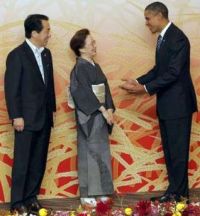 According to some recent article in the Japanese press, Prime Minister Naoto Kan mentioned the JET Programme in his meeting with Obama, reaffirming the program’s importance.
According to some recent article in the Japanese press, Prime Minister Naoto Kan mentioned the JET Programme in his meeting with Obama, reaffirming the program’s importance.
This is of course a significant statement about the importance of the JET Program to Japan.
Here are two articles:
- Japan Today (English): http://www.japantoday.com/category/politics/view/kan-obama-discuss-rare-earths-other-clean-energy
- Chunichi Shinbun (Japanese): http://www.chunichi.co.jp/s/article/2010111301000669.html
Here are some highlights from the Japan Today article:
Kan also told Obama that he aims to enhance bilateral exchanges between the two countries to include a wide range of people in five years.
The initiatives include sending young Japanese teachers and interns to the United States, as well as implementing such programs as promoting collaboration on education and two-way exchanges among universities in Japan and the United States, the officials said.
Kan also expressed concern about the declining number of Japanese students studying in the United States and voiced his intention to work more on this problem.
He also reaffirmed the importance of existing efforts, including the Japan Exchange and Teaching Program, the officials said.
Gunma-ken JET alum and Florida JETAA Newsletter Editor Bahia Simons-Lane has a good post on her blog–Bahia Portfolio: Posting about Japan, language and education–on the debate concerning benefits derived from the JET Programme.
A little more about Bahia and her background:
Bahia was an Assistant Language Teacher at a girls’ high school in Gunma Prefecture for 2 years, then she worked for the Gunma Prefecture Board of Education as the Assistant Language Teacher’s Advisor. She is currently pursuing a Master’s in International and Intercultural Education.
Don’t believe the hype
A recent post on InsideJapan News Network titled “Japan Plans US Teacher Training Scheme” cites a Daily Yomiuri article about a new proposed project to send Japanese teachers to the U.S. for two years of training. The Yomiuri article suggests that if this new project were to go forward, it would mean the end of the JET Programme.
However, after checking with several well-versed sources both in and out of the Japanese government, it sounds like the article’s analysis is inaccurate. Apparently, it would most likely be complementary program (if it even happens) and would not mean the end of the JET Programme.
To paraphrase one source, it wouldn’t make sense for President Obama to back a plan that would reduce the number of jobs for Americans.
JET ROI: JET alum op-ed in Asahi Shimbun – The JET Program is a ‘triumph of soft power’
The below op-ed titled “POINT OF VIEW: The JET Program is a ‘triumph of soft power’” appeared in the November 5, 2010 edition of the Asahi Shimbun. It was written by three JET alumni with expertise in Japan-U.S. policy and relations:
- James Gannon (Ehime-ken, 1992-94) – Executive Director of the Japan Center for International Exchange (JCIE/USA) and author of the “Chopping Block” article.
- Michael Auslin – Director of Japan Studies at the American Enterprise Institute.
- Paige Cottingham-Streater – Deputy Executive Director of the Maureen and Mike Mansfield Foundation.
(Here’s the link for the original article on the Asahi Shimbun website: http://www.asahi.com/english/TKY201011040234.html)
POINT OF VIEW: The JET Program is a ‘triumph of soft power’
In its 23 years, the Japan Exchange and Teaching Program has brought more than 50,000 young foreigners to Japan, including over 25,000 Americans, to teach in the school system as well as to support international exchange activities.
Each of us grew to know Japan through our participation in the JET Program, and this experience has changed the direction of our careers and enriched our lives.
In fact, the JET Program has touched the lives of so many people who might otherwise not be exposed to Japanese society that it is regarded by many outside of Japan as the most successful public diplomacy initiative in the world over the last several decades.
Therefore, we were especially dismayed to learn that it has been criticized in the last round of the budget screening process.
Since it was launched at the height of Japan-bashing in the late 1980s, the JET Program has produced an extraordinary legacy.
On the one hand, we would like to think that it has been beneficial for Japanese students and communities. We have heard many stories about how students’ personal interactions in the classroom with JET participants have made English into a “living language” for them and helped motivate them to use English for communication rather than just as an exam topic.
We get the sense that, in our globalizing world, even students who never mastered English have benefited from their interactions with JET participants from countries they may never have thought much about before.
The JET Program’s least recognized contribution, however, may be its most important. This is the remarkable success it has had as a public diplomacy program. By exposing thousands of young professionals to Japanese society, it has built up deep person-to-person ties between Japanese people and an entire generation of non-Japanese from around the world.
In our country, the United States, the impact of this program on U.S.-Japan relations is quite extraordinary. It is no exaggeration to say that it has become an important pillar of the bilateral relationship.
As they grow older, former JET participants have started to take important posts in government, business, and civil society, bringing their personal networks and a deep appreciation of the importance of strong U.S.-Japan relations to their everyday work.
In the U.S. government, for example, JET participants have worked on the frontlines of U.S.-Asia relations in the White House, the State Department and other agencies. Two JET alumni even ran for the U.S. Congress–Rob Cornilles, who ran on the Republican ticket in Oregon, and Dan Seals, a Democrat from Illinois.
Similarly, when one looks at the emerging generation of Japan experts in American academic circles and think tanks, it appears that the majority are graduates of the JET Program, many of whom may have otherwise taken a very different direction in their studies and careers.
This is true of the grassroots organizations that sustain U.S.-Japan relations, too. At least 4 of the 40 Japan-America Societies in the United States are headed by former JET participants.
In evaluating the contributions of the JET Program, it is important to keep in mind the role it is playing in strengthening the foundations of Japan’s engagement with the rest of the world and the world’s engagement with Japan. People who are immersed in Japanese communities tend to develop a lifelong connection to Japan, and we are just starting to reap the rewards of this far-sighted program.
In our rapidly changing world, where it is critical for countries to project an active global presence and where a robust U.S.-Japan partnership on a wide range of issues has become even more important, the connections built by the JET Program are an invaluable asset.
The JET Program has been a triumph of soft power. We are so grateful for the opportunity that has given us and believe that continuing the JET Program–and further strengthening it–is important for Japan and all of its friends around the world.

